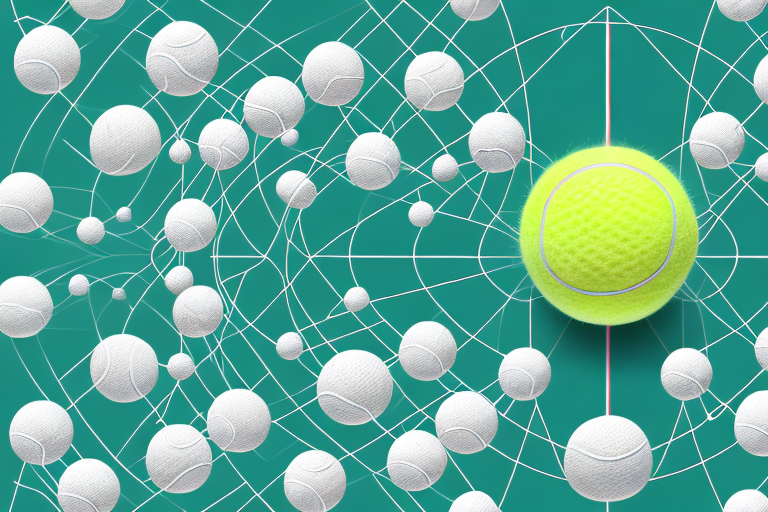If you suffer from chronic pain or muscular tension, using a tennis ball for trigger point release can be an affordable and effective option to help alleviate your symptoms. Trigger point release targets specific areas of tension in the muscles, also known as trigger points, by applying pressure in a controlled manner. In this article, we’ll explore how to use a tennis ball for trigger point release, the benefits of this technique, and additional tools and techniques you can use for more effective results.
Understanding Trigger Points: A Brief Overview
Trigger points are spots in the body that are painful when pressed and can cause referred pain in other areas of the body. These points can be caused by a variety of factors, including overuse, injuries, and stress. Trigger points may feel like a knot or a tight band in the muscle and can cause pain, weakness, and decreased range of motion.
It is important to note that trigger points can be treated through various methods, including massage therapy, physical therapy, and dry needling. Massage therapy involves applying pressure to the trigger point to release the tension and alleviate pain. Physical therapy may include exercises to stretch and strengthen the affected muscle. Dry needling involves inserting a thin needle into the trigger point to release tension and promote healing. It is important to consult with a healthcare professional to determine the best treatment plan for your specific condition.
The Benefits of Trigger Point Release with a Tennis Ball
There are many benefits to using a tennis ball for trigger point release. Tennis ball therapy can help relieve pain and discomfort caused by trigger points by promoting blood flow and tissue relaxation. It can also improve flexibility and range of motion, as well as increase circulation to the affected areas. Additionally, tennis ball therapy is an affordable and effective option that can be done in the comfort of your own home.
Another benefit of using a tennis ball for trigger point release is that it allows you to target specific areas of the body with precision. By applying pressure to the trigger point with the tennis ball, you can release tension and knots in the muscles, which can help alleviate pain and discomfort. This targeted approach can be especially helpful for athletes or individuals who experience chronic pain in specific areas of the body, such as the shoulders, hips, or lower back.
Preparing for Trigger Point Release: What You Need to Know
Before you begin using a tennis ball for trigger point release, it’s important to consult with your healthcare provider to ensure that this technique is appropriate for your individual condition. It’s also important to prepare your body before beginning the therapy. You should be warm, relaxed, and hydrated before starting, and avoid placing the ball in sensitive areas or areas with bony protrusions.
In addition to these preparation steps, it’s important to start slowly and gradually increase the pressure and duration of the therapy. It’s also recommended to focus on one area at a time and take breaks in between to avoid overworking the muscles. If you experience any pain or discomfort during the therapy, stop immediately and consult with your healthcare provider. With proper preparation and technique, trigger point release can be an effective way to alleviate muscle tension and pain.
Finding Trigger Points: Identifying Painful Areas in Your Body
One of the key elements of using a tennis ball for trigger point release is identifying the areas of tension or pain in your body. Common areas to target include the neck, shoulders, back, hips, and feet. Watch for areas that feel sensitive or painful when pressure is applied. These may be areas of tension or trigger points.
Step-by-Step Guide to Using a Tennis Ball for Trigger Point Release
To use a tennis ball for trigger point release, follow these steps:
- Find a comfortable and stable surface, such as a bed or an exercise mat, and place the tennis ball on it.
- Lie down on the ball positioning it under the area of tension or pain. You can adjust your body position until you find the spot that feels most effective.
- Spend 1-2 minutes applying pressure to the trigger point or area of tension. Begin with light pressure and gradually increase as your muscles relax.
- You can move the ball around slowly to target different areas or focus on a specific area for longer periods of time.
- Remember to breathe deeply and relax your muscles as you work.
Common Mistakes to Avoid When Using a Tennis Ball for Trigger Point Release
When using a tennis ball for trigger point release, it’s important to avoid these common mistakes:
- Overdoing it by applying too much pressure or working the same area for too long. This can cause further muscle damage and soreness.
- Working on areas that are already inflamed or irritated. Always consult with your healthcare provider before beginning tennis ball therapy.
- Placing the ball on sensitive areas or areas with bony protrusions. This can cause injury or discomfort.
Understanding the Sensations of Trigger Point Release: What to Expect
When using a tennis ball for trigger point release, it’s common to experience sensations of discomfort or pain as the trigger point is released. You may also feel a warming or tingling sensation in the area as blood flow to the muscle increases. It’s important to listen to your body and avoid overdoing it.
How Often Should You Use a Tennis Ball for Trigger Point Release?
The frequency of tennis ball therapy for trigger point release depends on your individual condition and symptoms. It’s best to start with 1-2 sessions per week for 10-20 minutes and gradually increase as your muscles tolerate it. Always listen to your body and avoid overdoing it. Consult with your healthcare provider to determine the best frequency of therapy for your individual needs.
Additional Tools and Techniques for Effective Trigger Point Release
In addition to using a tennis ball, there are other tools and techniques that can be used for effective trigger point release. These include foam rollers, massage therapy, stretching, and hot/cold therapy. It’s important to consult with your healthcare provider to determine the best combination of therapies for your individual needs.
Combining Tennis Ball Therapy with Other Forms of Massage and Stretching
Using a tennis ball for trigger point release can be effective when combined with other forms of massage and stretching. Some techniques to consider include deep tissue massage, manual release therapy, and yoga. Always consult with your healthcare provider before beginning any new form of therapy.
When to Seek Professional Help for Chronic Pain and Muscular Tension
If you suffer from chronic pain or muscular tension, it’s important to seek professional help to determine the underlying cause of your symptoms. In some cases, trigger point release therapy may not be appropriate or effective. Consult with your healthcare provider to determine the best course of treatment for your individual condition.
In conclusion, using a tennis ball for trigger point release can be an effective, affordable, and accessible option for those suffering from chronic pain and muscular tension. Remember to consult with your healthcare provider before beginning this or any new form of therapy, and always listen to your body to avoid overdoing it. By combining this technique with other forms of therapy and practicing proper self-care, you can achieve greater comfort and mobility in your daily life.




